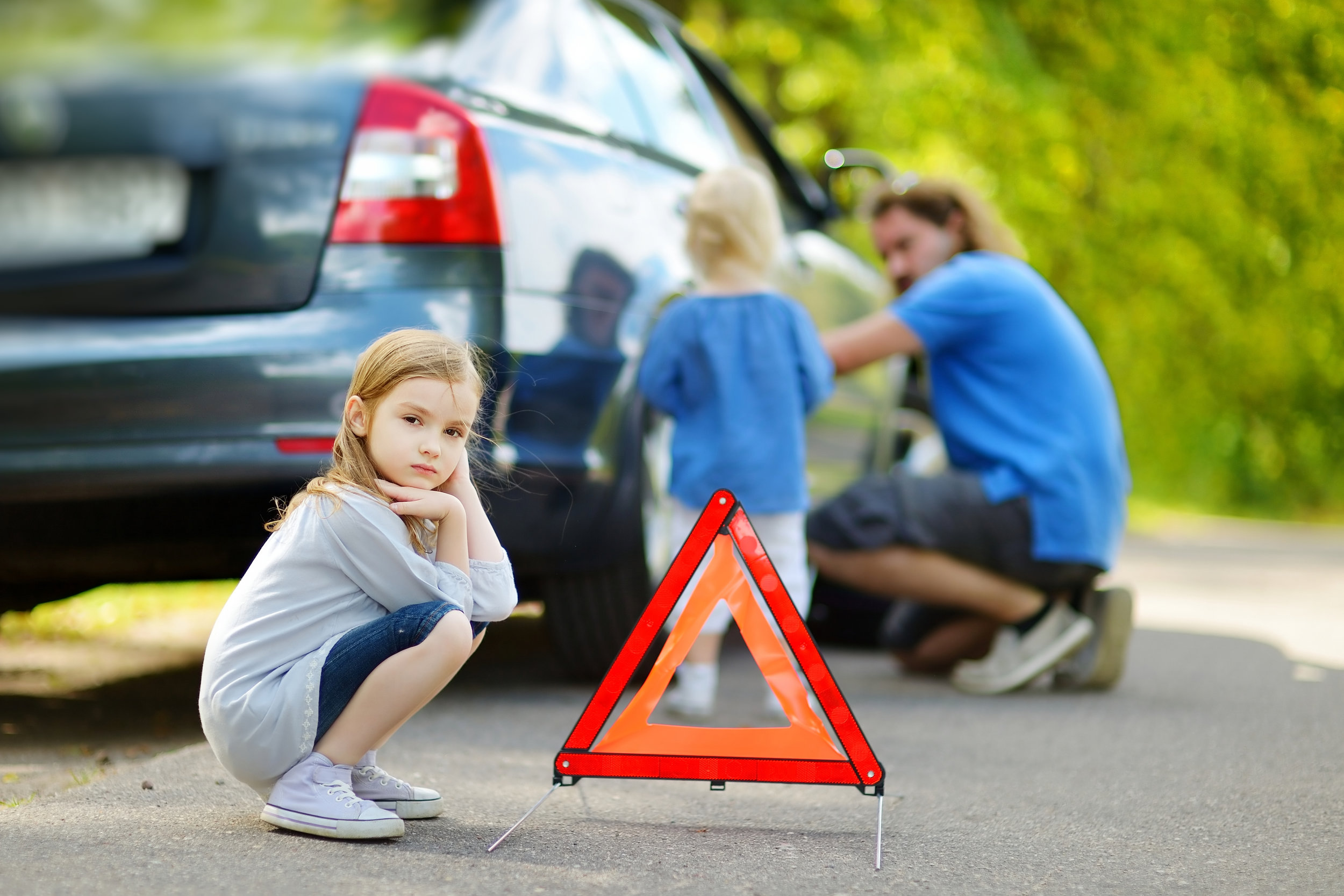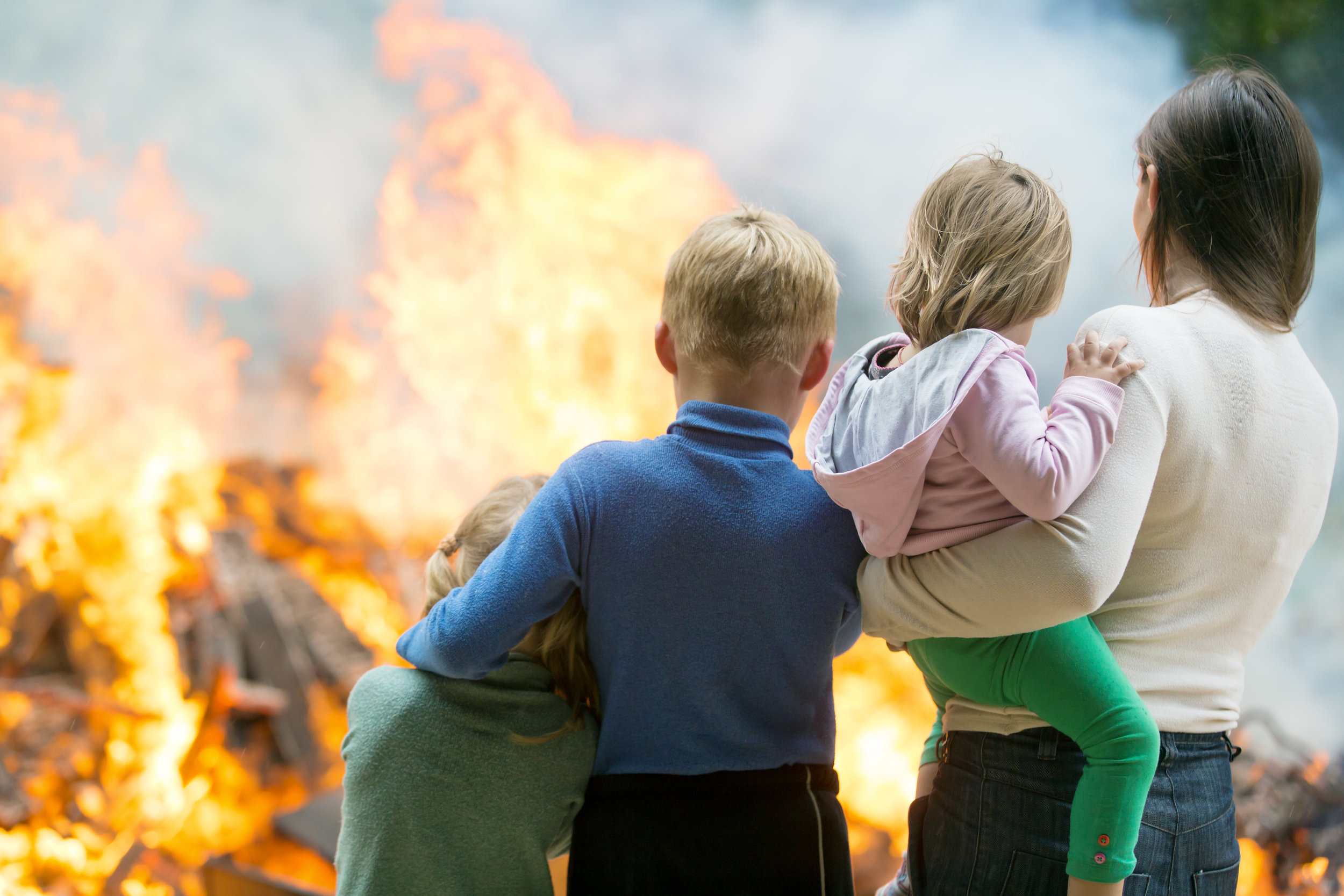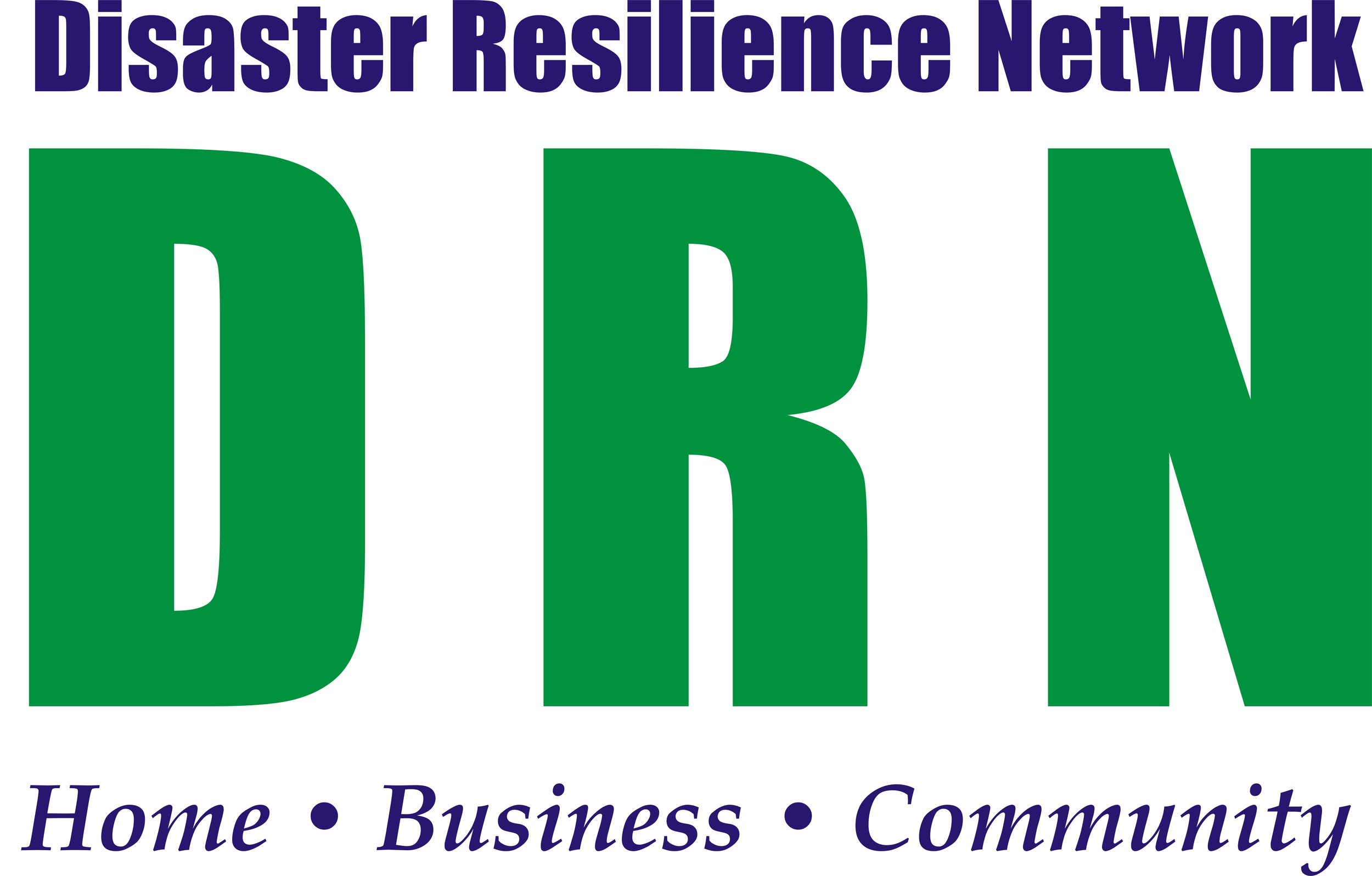Disaster can strike quickly and without warning.

Why talk about a Family Disaster Plan?
Disaster can strike quickly and without warning. It can force you to evacuate your neighborhood or confine you to your home. What would you do if basic services, such as water, gas, electricity, or telephones were cut off? Local officials and relief workers will be on the scene after a disaster, but they cannot reach everyone right away.
Families can and do cope with disaster by preparing in advance and working together as a team. Knowing what to do is your best protection and your responsibility. Learn more about Family Disaster Plans by contacting your local emergency management office or your local American Red Cross chapter.
Families can and do cope with disaster by preparing in advance and working together as a team. Knowing what to do is your best protection and your responsibility.
Awareness Information
A National Weather Service (NWS) WATCH is a message indicating that conditions favor the occurrence of a certain type of hazardous weather. For example, a severe thunderstorm watch means that a severe thunderstorm is expected in the next six hours or so within an area approximately 120 to 150 miles wide and 300 to 400 miles long (36,000 to 60,000 square miles). The NWS Storm Prediction Center issues such watches. Local NWS forecast offices issue other watches (flash flood, winter weather, etc.) 12 to 36 hours in advance of a possible hazardous-weather or flooding event. Each local forecast office usually covers a state or a portion of a state.
An NWS WARNING indicates that a hazardous event is occurring or is imminent in about 30 minutes to an hour. Local NWS forecast offices issue warnings on a county-by-county basis.
Here is how to create your Family Disaster Plan:
Meet with your family and discuss why you need to prepare for disaster. Explain the dangers of fire, severe weather, and earthquakes to children. Plan to share responsibilities and work together as a team. Keep it simple enough so people can remember the important details. A disaster is an extremely stressful situation that can create confusion. The best emergency plans are those with very few details.
- Discuss the types of disasters that are most likely to happen. Explain what to do in each case. Everyone should know what to do in case all family members are not together. Discussing disasters ahead of time will help reduce fear and anxiety and will help everyone know how to respond.
- Pick two places to meet:
- Right outside of your home in case of a sudden emergency, like a fire.
- Outside of your neighborhood in case you can’t return home or are asked to leave your neighborhood. Everyone must know the address and phone number of the meeting locations.
- Develop an emergency communication plan. In case family members are separated from one another during floods or other disasters, have a plan for getting back together. Separation is a real possibility during the day when adults are at work and children are at school.
- Ask an out-of-town relative or friend to be your ‘family contact.’ Your contact should live outside of your area. After a disaster, it is often easier to make a long distance call than a local call. Family members should call the contact and tell him or her where they are. Everyone must know the contact’s name, address, and phone number.
- Discuss what to do if authorities ask you to evacuate. Make arrangements for a place to stay with a friend or relative who lives out of town and/or learn about shelter locations.
- Be familiar with escape routes. Depending on the type of disaster, it may be necessary to evacuate your home. Plan several escape routes in case certain roads are blocked or closed. Remember to follow the advice of local officials during evacuation situations. They will direct you to the safest route; some roads may be blocked or put you in further danger.
- Plan how to take care of your pets. Pets (other than service animals) are not permitted to be in places where food is served, according to many local health department regulations. Plan where you would take your pets if you had to go to a public shelter where they are not permitted.
Tell children that a disaster is something that happens that could hurt people, cause damage, or cut off utilities such as water, telephones, or electricity. Explain to them that nature sometimes provides ‘too much of a good thing’–fire, rain, wind, snow. Talk about typical effects that children can relate to, such as loss of electricity, water, and telephone service.
Give examples of several disasters that could happen in your community. Help children recognize the warning signs for the disasters that could happen in your community. Discussing disaster ahead of time reduces fear and anxiety and lets everyone know how to respond.
Teach children how and when to call for help. Check the telephone directory for local emergency telephone numbers. If you live in a 9-1-1-service area, teach children to call 9-1-1. At home, post emergency telephone numbers by all phones and explain when to call each number. Even very young children can be taught how and when to call for emergency assistance. If a child can’t read, make an emergency telephone number chart with pictures that may help the child identify the correct number to call.
Explain that when people know what to do and practice in advance, everyone is better able to handle emergencies. That’s why you need to create a Family Disaster Plan.Have older children take a first aid and CPR course. These are critical skills, and learning can be a fun activity.
Tell children that in a disaster there are many people who can help them. Talk about ways that an emergency manager, Red Cross volunteer, police officer, firefighter, teacher, neighbor, doctor, or utility worker might help following a disaster.
Teach children to call your family contact in case they are separated from the family in an emergency. Help them memorize the telephone number, or write it down on a card that they can keep with them.
What to Tell Children
Be prepared at all times! You feel safer and so do they.
Family Disaster Kit

Why Talk About a Disaster Supplies Kit?
After a disaster, local officials and relief workers will be on the scene, but they cannot reach everyone immediately. You could get help in hours, or it may take days. Basic services, such as electricity, gas, water, and telephones, may be cut off, or you may have to evacuate at a moment’s notice. You probably won’t have time to shop or search for the supplies you’ll need. Your family will cope best by preparing for disaster before it strikes.
Local officials and relief workers will be on the scene, but they cannot reach everyone immediately. You could get help in hours, or it may take days…you probably won’t have time to shop or search for the supplies you’ll need.
Disaster Supplies Kit Basics
The following items might be needed at home or for an evacuation. Store your kit in a convenient place known to all family members. Kit basics are:
- A portable, battery-powered radio or television and extra batteries.
- Flashlight and extra batteries.
- First aid kit and first aid manual.
- Supply of prescription medications.
- Credit card and cash.
- Personal identification.
- An extra set of car keys.
- Matches in a waterproof container.
- Signal flare.
- Map of the area and phone numbers of places you could go.
- Special needs, for example, diapers or formula, prescription medicines and copies of prescriptions, hearing aid batteries, spare wheelchair battery, spare eyeglasses, or other physical needs.
- If you have additional space, consider adding some of the items from your Evacuation Supplies Kit.
Tips for Your Disaster Kit(s)
Keep a smaller Disaster Supplies Kit in the trunk of each car. If you become stranded or are not able to return home, having some items will help you to be more comfortable until help arrives.
Keep items in airtight plastic bags. This will help protect them from damage or spoiling.
Replace stored food and water every six months. Replacing your food and water supplies will help ensure their freshness.
Rethink your kit and family needs at least once a year. Replace batteries, update clothes, etc.
Ask your physician or pharmacist about storing prescription medications. It may be difficult to obtain prescription medications during a disaster because stores may be closed or supplies may be limited.
Esté Listo para Emergencias y Desastres

Haga un plan de Emergencia
Los pasos que debe seguir para hacer un plan de emergencia para su familia incluye:
• Reúnase con su familia y converse sobre los peligros de posibles situaciones de emergencia, tales como, incendios, condiciones meteorológicas, derrames de sustancia peligrosas, y actos de terrorismo.
• Converse sobre como responderán usted y su familia ante cada situación.
• Converse sobre que hacer si se produce un corte de electricidad o alguien resulta lesionado.
• Dibuje un plano de su casa y señale dos vías de escape desde cada habitación.
• Enseñe a los adultos como y cuando desconectar las llaves maestras del agua, gas, y electricidad.
• Coloque los números de teléfono de emergencia cerca de todos los teléfonos (vea la contraportada) y grábelos en la memoria de los teléfonos que tengan función de marcado automático.
• Enseñe a los niños como y cuando deben marcar el 9-1-1 para pedir ayuda en caso de emergencia.
• Porque generalmente es más fácil realizar llamadas fuera del estado que dentro de la zona afectada, elija un amigo o familiar fuera del estado a quien todos los miembros de la familia llamarán en caso de ser separados durante la emergencia.
• Instruya a los miembros de su familia a que enciendan la radio para obtener información en caso de emergencia.
• Elija dos lugares de reunión – uno cerca de su casa y el otro fuera de la zona donde usted vive en caso de que no puedan regresar a su hogar después de la emergencia.
• Tome lecciones básicas de primeros auxilios y resucitación cardiopulmonar, (CPR).
• Guarde los documentos importantes de la familia en una caja fuerte a prueba de agua y fuego. Se pueden conseguir modelos económicos en la mayoría de las ferreterías.
Prepare un Botiquín de suministros de emergencia
Durante una situación de emergencia se puede interrumpir el servicio de electricidad, agua, gas, calefacción, aire acondicionado, y el servicio telefónico. Al preparar el equipo de suministros de emergencia con anticipación usted podría ahorrar tiempo muy valioso en caso que tenga que evacuar o permanecer sin electricidad, gas, agua, o calefacción durante un periodo largo de tiempo.
Un artículo de almacenamiento para un botiquín de primeros auxilios para “llevar” puede ser una bolsa de supermercado, una mochila o una bolsa de lona y guárdelo en el carro o en el garaje. El botiquín para el “hogar” podrá ser almacenado en un contenedor de plástico o en un bote para la basura y conservarlo en el lugar mas seguro de su casa donde usted y su familia se refugiarán en caso de emergencia.
Considere los siguientes artículos para cuando prepare su equipo de emergencia:
• Provisión de agua para un mínimo de tres días (1 galón por persona por día). Almacene el agua en recipientes irrompibles y herméticos. Reemplace el agua cada 6 meses.
• Una provisión de 3 a 5 días de alimentos enlatados o envasados y un abrelatas manual.
• Una muda de ropa, equipo para lluvia y calzado resistente.
• Mantas, cobijas o sacos de dormir.
• Un botiquín de primeros auxilios medicina prescrita por su doctor (verifique la fecha de vencimiento).
• Un par de anteojos o lentes de contacto y solución para limpiar (verifique la fecha de vencimiento).
• Una lista de Doctores de la familia, y antecedentes médicos importantes, el tipo y el número de serie de los dispositivos médicos, por ejemplo, un marcapasos.
• Objetos especiales para niños pequeños, ancianos, y familiares que tengan una incapacidad.
• Un radio de baterías, una linterna y baterías adicionales.
• Documentos de identidad, tarjeta de crédito, dinero en efectivo y fotocopias de documentos importantes de la familia, incluya la póliza de seguro de la vivienda
• Un juego adicional de llaves del automóvil y de la casa
• Herramientas tales como destornilladores, cortadoras o tijeras, además, cinta adhesiva, fósforos en envase a prueba de agua, un extintor ABS, luces de bengala, recipientes plásticos, aguja e hijo, lápiz y papel, una brújula, bolsas para la basura, y blanqueador de uso domestico.
Conozca más sobre las tormentas
Vivimos en lo que se conoce como el callejón de tornados (Tornado Alley). Por lo tanto Oklahoma está expuesta a diversos peligros de orden meteorológico, incluyendo calor extremo, tormentas eléctricas, inundaciones súbitas, tornados, y tormentas de nieve. Por tal motivo, es importante que usted reconozca la diferencia entre una Alerta (Watch) y un Aviso (Warning) de Mal Tiempo (Severe Weather).
• Una Alerta meteorológica, (Severe Weather Watch) significa que es posible que se desate una tormenta.
• Un Aviso meteorológico, (Severe Weather Warning) significa que la tormenta ya se ha desatado y que está en camino, y por lo tanto ¡debe ponerse en resguardo de inmediato!


